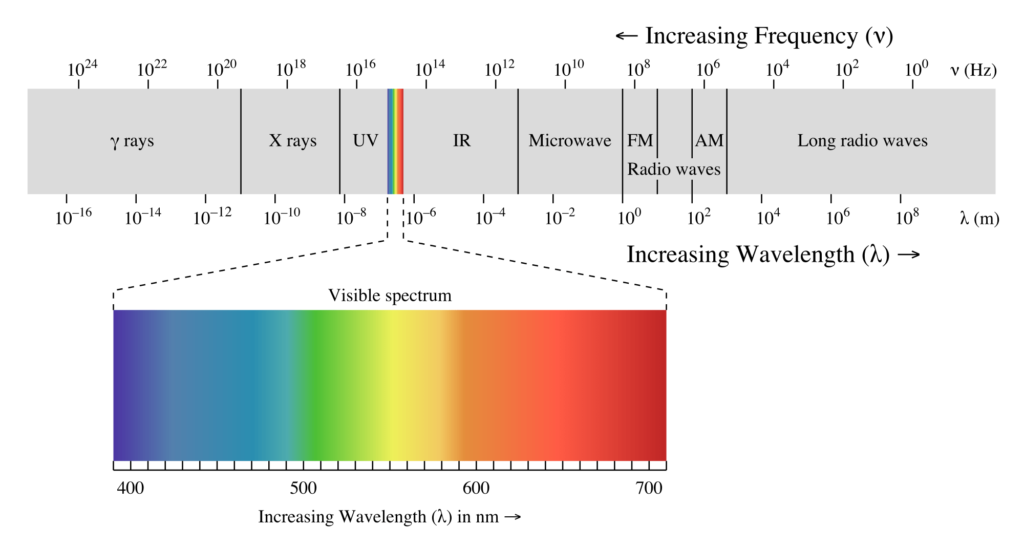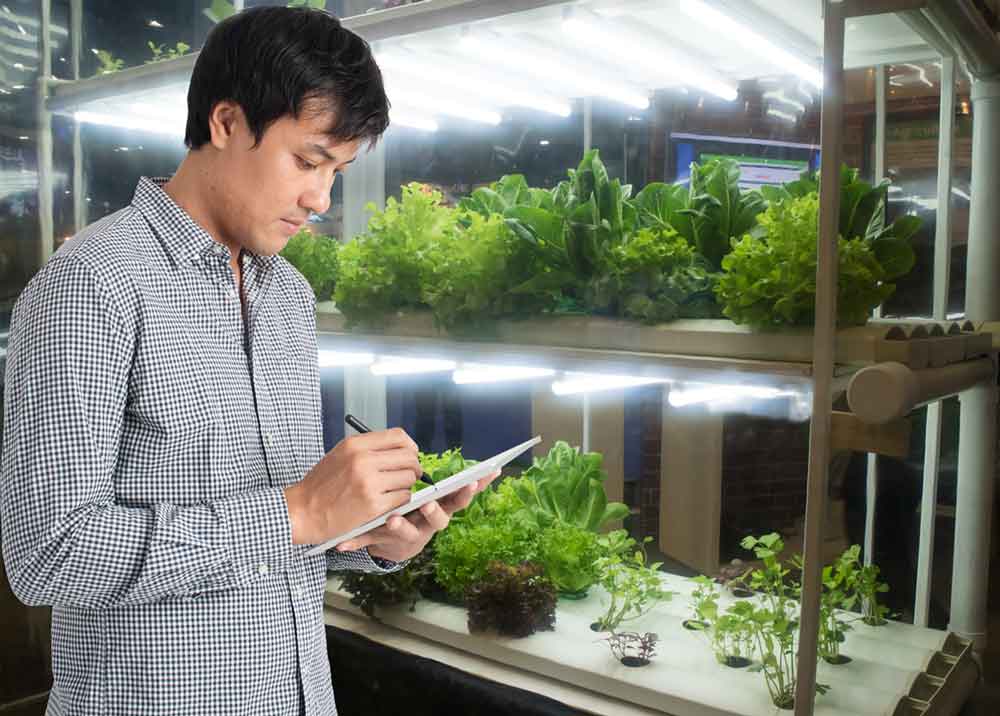You probably know that plants require light to live and grow, but have you thought about grow light uniformity and other aspects of lighting? While some light is better than no light, there’s no reason to settle for less than perfect. When optimizing your lighting system, there are a number of factors to consider.
Light output, light energy efficiency, and light uniformity impact both the success of your grow and your energy costs. By understanding and optimizing these factors, you can achieve better yields and cut your utility bill. It’s a win-win.
Figuring Out Your Light Output
When choosing grow lights, it’s important to pay attention to the light output. There are a lot of measurements and acronyms involved with grow lights, and all of these can get confusing. So, let’s take a look at some of the terms and measurements that matter.
Important Terms
Photosynthetic active radiation (PAR) is the range of light plants use for photosynthesis. It includes light in the wavelength range of 400-700 nanometers. PAR is not a measurement, but rather a way to describe a range of light.

Photosynthetic photon flux (PPF) is the measurement of the amount of PAR produced by the bulb and ballast. The PPF is measured in terms of micromoles per second (μmo/s). It’s important to note this measurement does not take a reflector into account. It also does not involve light reaching a given area, but rather light coming out of a lamp.
A watt is the unit used to indicate how much energy a fixture is using; this is also known as the energy input. It’s important to note that more watts does not always mean greater light intensity.
What Matters?
Since manufacturers often list a lot of information about lighting fixtures, it’s hard to decide what matters. Should you care about watts? PPF? PPFD? All of it?
First, look at the PPF. This number corresponds loosely to the light’s intensity. More accurately, the higher the PPF, the higher the light bulb’s output.
However, this number does not take the reflector into account. So a lot of this light could be lost to the surrounding area or absorbed by the reflector and turned into heat. Make sure to note the efficiency of the reflector, as well as the PPF.
As an example, let’s look at the DimLux 1000 Watt light. This light comes with the Philips MASTER GreenPower Xtra 1000W lamp. This high pressure sodium (HPS) bulb has a PPF of 2150 μmol/s at 1000 watts; the highest output of any bulb on the market.
When growers boost this light into overdrive mode, its PPF bumps up to 2580 μmol/s. At this level, it uses 1200 watts. Along with this, growers can dim this light to a variety of levels. This helps growers save energy and reduce heat output.
While PPF is an important measurement, remember this number doesn’t take the reflector into account. When we look back at the DimLux 1000, we see it comes with the Ultra Optics 98 reflector. This reflector has a 98% efficiency, which is an exceptionally high rating. Therefore, the vast majority (98%) of the light produced is making its way to the canopy rather than being absorbed by the reflector. Remember, this percentage applies to a clean reflector, so make sure to regularly maintain your reflector.
Increasing Energy Efficiency
The energy efficiency of a light is important to your bottom line. Therefore, it’s important to look at the energy use of a light along with its output.
Let’s look back at the DimLux 1000 Watt light. When this light is producing 2150 μmol/s of PAR, it is consuming 1000W. By dividing the PPF by the consumption, we learn this light produces 2.15 μmol/s/W. The higher this number, the more efficient a light is.
For example, if a light emits a PPF of 2150 μmol/s and uses 1500 W to produce this output so, it will produce 1.43 μmol/s/W. This light is less efficient than a light that has the same PPF but only uses 1000 W to produce this output.
Another important factor in determining light efficiency is heat. When a light fixture traps heat, the area around the bulb heats up. Bulbs struggle to produce light at higher temperatures, so their efficiency decreases.
Some types of lights produce more heat than others. For example, CMH lights produce more heat than LED lights. Therefore, cooling costs are typically lower with LED lights. Remember to factor the energy used for cooling into your light efficiency calculations.
Since cooling costs can add up, it’s smart to explore other heat-reduction options. Automated controls can dim lights when temperatures get too hot, saving on cooling costs. Ventilation helps remove heat and keep the light at an optimum temperature for bulb efficiency. For example, the Ultra Optics 98 reflector contains ventilation holes that allow heat to escape. In addition, this reflector has a socket that growers can use to extract hot air.
The Importance of Light Uniformity
While growers often think about lighting factors such as quality, quantity, and efficiency, they sometimes overlook grow light uniformity. But they shouldn’t! Light uniformity is just as important as other lighting factors.
As you may have guessed, light uniformity is how evenly light is spread across a given area. When designing optimal lighting for a grow room, a good number to shoot for is 90% uniformity. This means that the minimum light is at least 90% of the intensity of the intensity of the average light.
Uniformity is important for even growth. If lighting is not uniform, some plants will receive more light than others. This leads to uneven growth, which can lead to some plants shading out others.
Uneven lighting can also cause problems with uneven water use. Plants receiving more light will dry faster than those receiving less light. This makes proper irrigation challenging.
However, this is also where some confusion comes up. The uniformity provided by an LED grow light with 1000 diodes without lenses will not produce the light intensity necessary to penetrate deep into the canopy. And there are many reflectors that can create uniform light, but they simultaneously diminish the HID grow light’s intensity, making it less effective at penetrating into the second and third tier of canopy!
If you want to grow taller plants, that flower throughout the different canopy layers, the grow lights you use must deliver intense light to the canopy, and that’s where DimLux HID grow lights shine. The combination of industry leading ballasts, lamps, and reflectors allow you to get flower production deep into the canopy, increasing your yields, and encouraging the plant to express it’s maximum genetic potential.
Factors Impacting Light Uniformity
Most lights produce light that varies in intensity. For example, the intensity right under the light will be greater than the intensity at the edge of the light’s range. Therefore, if you have multiple lights in a grow room, you need to figure out the proper spacing for proper light uniformity.
A number of factors impact light uniformity. These include the number of lights you use, the type of light you use, the reflectors you use, how close together your lights are, and how high you hang your lights. If you’re thinking this is a complex topic, you’re right!
Since there are so many factors involved, there is no one size fits all design for optimum light uniformity. A good option to determine the best setup for your operation is to talk to your light manufacturer. Since they are familiar with the specifics of your lights, they can help you design a system that maximizes light uniformity as well as other features.
To find the ideal setup for your growing project, fill out and submit this form. Global Garden staff will get back to you with a DimLux lighting plan made just for you. This plan will help you optimize grow light uniformity, therefore increasing crop health and yields.
Figuring Out Grow Light Hanging Height
When hanging grow lights, your goal is to optimize three factors: light intensity, heat, and light coverage. When hanging lights, it’s important to consider grow light uniformity as well. You want every plant in your grow room to receive the optimum amount of light.
There is no one size fits all hanging height for grow rooms. The optimal hanging height depends on a number of factors.
Reflector footprint
Reflectors impact a light’s footprint, or how much area it covers. As reflector width increases, so does the area a light covers. As light height increases, the area a light covers also increases. Therefore, it often makes sense to select narrower reflectors for high hanging heights and wider reflectors for low hanging heights. The Ultra Optics Reflector is adjustable, providing both wide or narrow configurations. Additionally, DimLux offers the Add-on Reflectors, to send more light down to the plants rather than allow it to strike the wall.
Number of lights
The greater the number of lights, the more area you can cover. For each light, the lower you hang it, the smaller an area it covers. Generally, if you are trying to cover a large area with only one light, you will need to hang this light higher than if you are using two lights.
When using more than one light, it’s important to space the lights so all areas receive the same intensity of light.
Tent size and shape
The size and shape of your tent or grow room impacts the number of lights you can hang, as well as the height you can hang them at. As you probably know, you can’t hang your lights any higher than the top of your growing area! Also, remember to consider how walls impact light. If walls are not reflective, light will be lost when it hits the walls.
Plants growing
It’s important to note the size and growth stage of the plants you are growing. When plants are in the vegetative stage, lights should be further away than when plants are in the flowering stage if they are the same intensity. Basically, plants that are vegging use a little less light than flowering plants.
Type of light
Different types of lights have varying levels of intensity and heat output. Make sure your lights are not so low that they will burn your plants.
Too High or Too Low?
Now that we know the factors that impact grow light hanging height, let’s learn about what happens if you hang heights too high or too low.
If you hang your lights too high, you’ll experience a number of problems.
- Footprint is too wide, and light is lost to walls.
- The intensity of light reaching your plants is too low.
- Not enough heat reaches your plants.
Likewise, there are problems if you hang your lights too low.
- Footprint is too narrow, and not all plants receive light.
- The intensity of light reaching your plants is too high.
- The area around your plants is too hot.
Lights for Your System
As you’ve read above, there are a number of factors that are important when designing your lighting system. The grow light intensity is important, but you must also take into account energy efficiency. Another aspect to pay attention to is grow light uniformity. Photosynthetic active radiation
To figure out the best lighting configuration for your operation, contact Global Garden staff. We’ll be happy to help you find the best products for your needs.
